A bunch of high Nvidia advertising gurus collect collectively to determine easy methods to cool their newest top-end graphics card, the Nvidia GeForce FX 5800 Extremely. “We could possibly be the Harley Davidson of graphics playing cards,” suggests Steve Sims, senior product supervisor. “When individuals purchase a Harley or a Porsche one of many issues they’re on the lookout for is that distinct noise that it makes,” concurs Dan Vivoli, vice chairman of promoting.
The video of the assembly, titled The Decibel Dilemma, then cuts to a dentist utilizing a drill, and different clips of the GeForce FX 5800 Extremely graphics card being utilized in humorously noisy conditions. It’s pictured getting used as a hairdryer, a part of a espresso grinder, and on the tip of a leaf blower. Make no mistake, Nvidia is aware of this isn’t the perfect graphics card proper now.
Having realized that the criticism of the noise from its newest FX Circulate cooler isn’t going to go away, Nvidia has determined to place its arms up and personal the state of affairs with a comedy video, based mostly on concepts contributed by the PC fanatic group.
It’s tough to think about a tech producer having an identical delf-deprecating humorousness now – Nvidia did, in any case, initially demand $1,199 for the GeForce RTX 4080 at launch, apparently with a totally straight face. You may see the video beneath.
The Nvidia dustbuster cooler
Was this card’s cooler actually that dangerous? I used to be one of many reviewers who examined among the first samples of the GeForce FX 5800 Extremely in early 2003, and I can inform you that the comparability with a hairdryer wasn’t far off. There was a really sudden distinction between the quiet noise the cooler made when it was idle in Home windows and the wind tunnel-like sound it made when the tiny fan spun up throughout our gaming benchmarks.
You possibly can hear all of it the way in which from the opposite aspect of the lab, frightening plenty of laughter from the workers working there on the time. The stable wall of noise could possibly be likened to a hairdryer, however it additionally had a high-pitch whir – mix a dentist drill with a hairdryer and also you’ll have an thought of the way it sounded.
We criticized the noise from the blower-style coolers AMD used on its 1st-generation Navi playing cards just a few years in the past, however that noise was nowhere close to as ridiculous because the racket from the FX 5800 Extremely. Nvidia had obtained it so fallacious that the one method to beat the comedians was to affix them in laughing at itself. How did it occur?
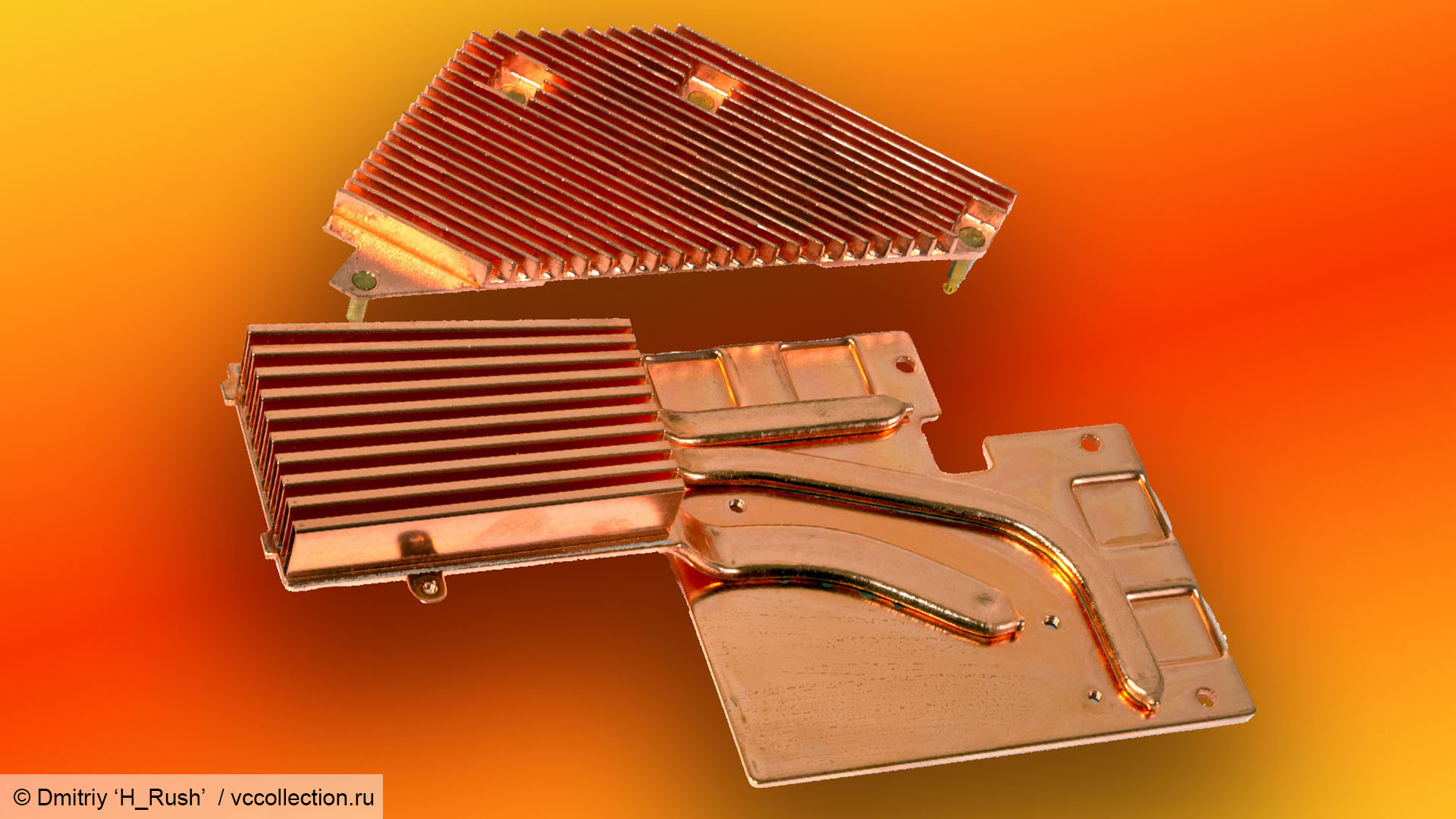
Nvidia’s new GeForce FX 5800 Extremely noticed Nvidia taking a brand new strategy to cooling. Up till this level, most (though not all) graphics playing cards had occupied a single enlargement slot bracket and solely required a single fan on the GPU itself. Nvidia’s new GPU structure prompted the corporate to take a brand new strategy to cooling.
The transfer to the brand new GeForce FX structure, codenamed Rankine, noticed Nvidia shifting to TSMC’s 130nm manufacturing course of in a chip clocked at 500MHz, and in addition utilizing GDDR2 reminiscence clocked at 500MHz (1GHz efficient). Nvidia wished a cooling setup that might tame the comparatively hot-running {hardware} and its answer to this cooling drawback was known as FX Circulate.
The thought was to chill the whole thing with one small fan, utilizing a concentrated airflow system. A big copper plate coated the reminiscence and GPU on the entrance of the cardboard, which was linked to a copper heatsink by three heatpipes. A small fan then pulled air from the highest vent on the cardboard’s backplate, going throughout the heatsink to chill the GPU and reminiscence plate.
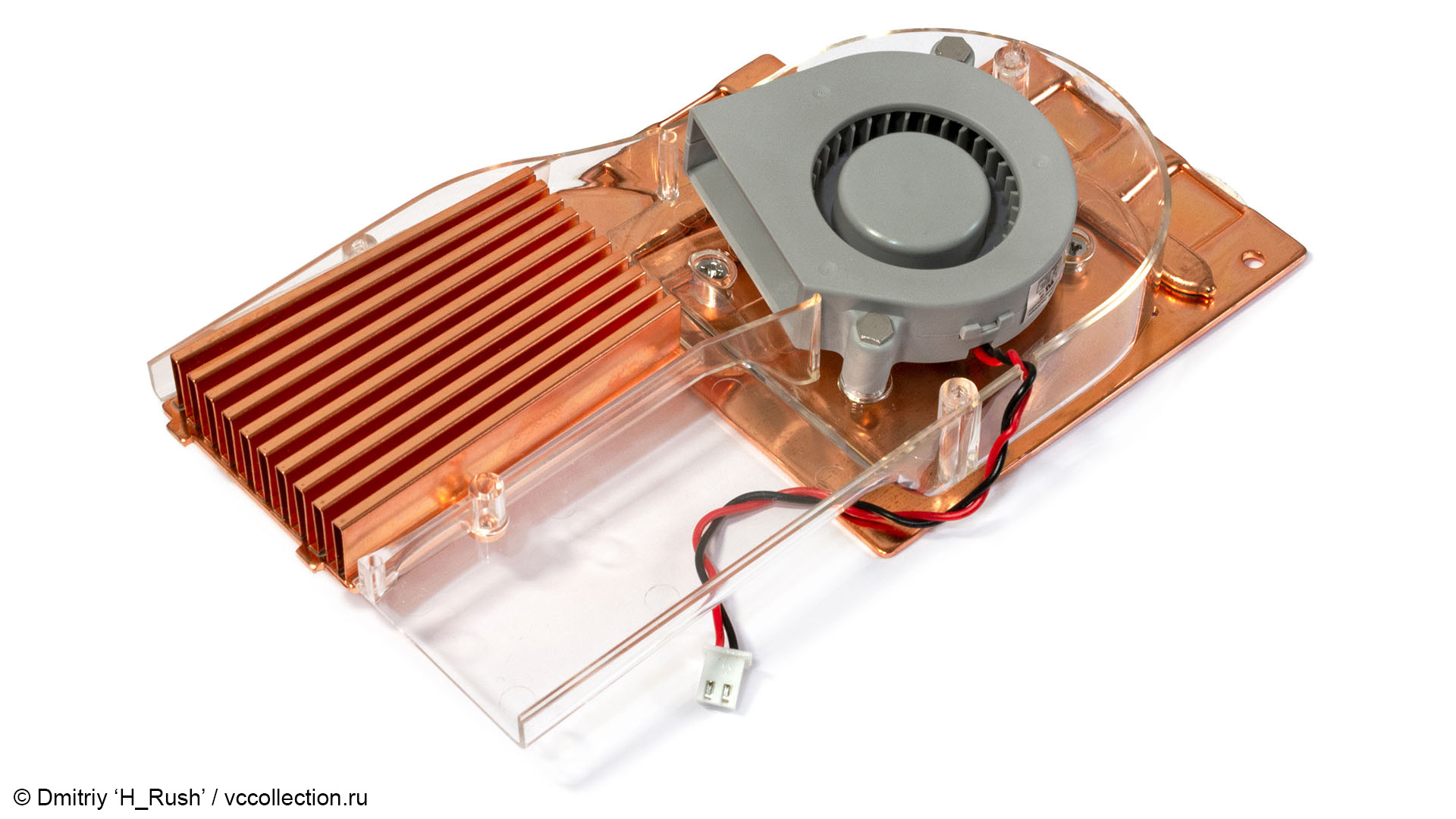
The air was then directed (by the identical fan) out the underside vent on the cardboard’s backplate, with a plastic shroud forcing the system to direct the airflow on this means.
In the meantime, a second copper heatsink was connected to the reminiscence chips on the again of the cardboard. You may see the way it all labored within the nice photographs of a Gainward GeForce FX 5800 Extremely card on this web page, kindly supplied by Dmitriy ‘H_Rush’ from vccollection.
It was a sound design in concept, and Abit had already demonstrated an identical cooling system on its OTES-branded graphics playing cards. With this technique, Nvidia would be certain that the hot-running elements had been stored cool, and that any scorching air dumped inside your case was stored to a minimal. The principle drawback was that the tiny fan needed to run at a really excessive pace to make sure that it labored correctly, and the noise was horrendous, gaining it the nickname of the “dustbuster” amongst fanatics.
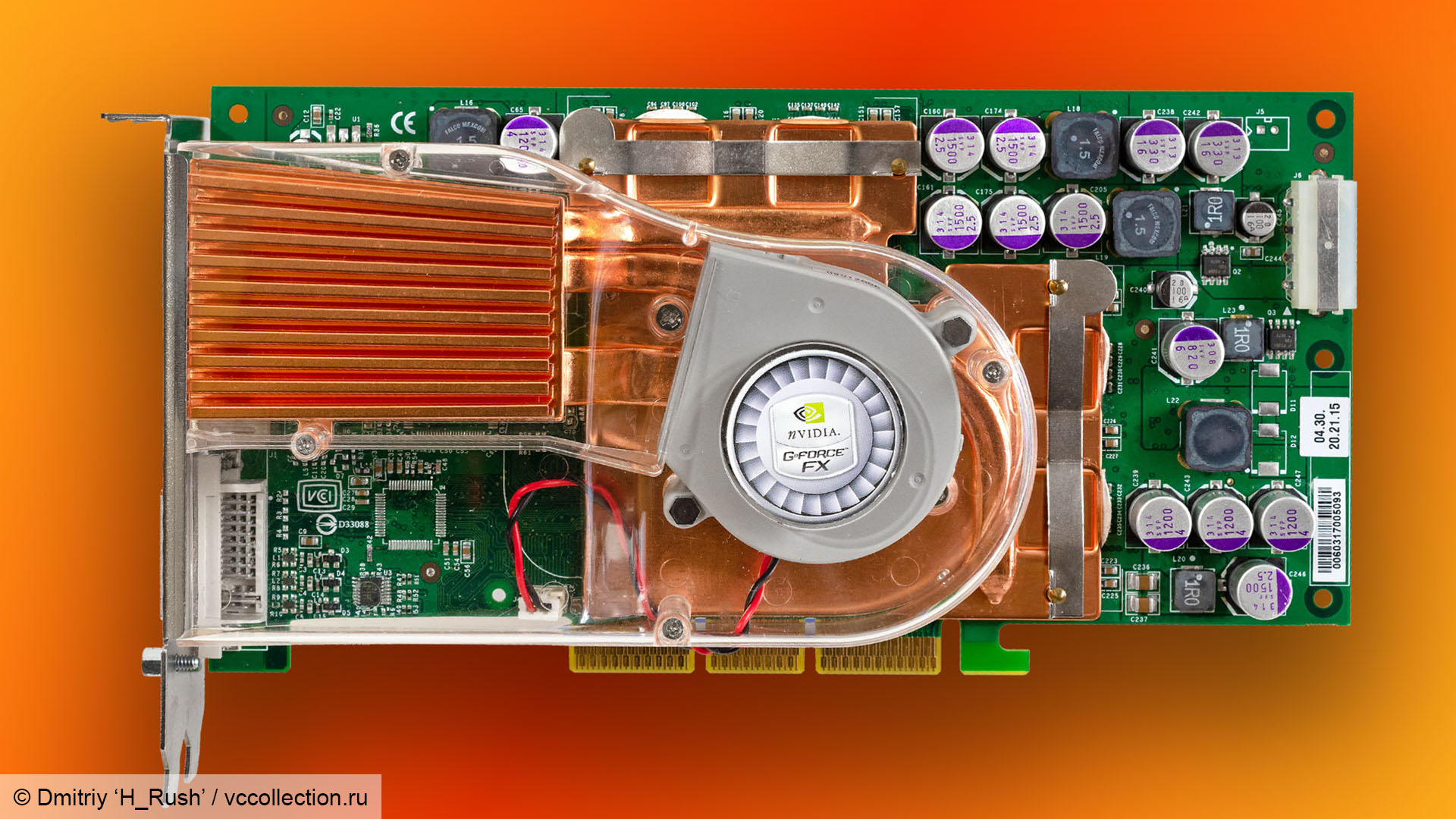
Was GeForce FX good?
Nvidia’s joke advertising video did one good job for the corporate, which was to focus consideration on the cooling system, reasonably than the GPU. Even the dialogue initially of the video describes the GeForce FX 5800 Extremely as “probably the most highly effective graphics card on the planet,” which was stretching the reality at greatest. It was undoubtedly extra highly effective than the GeForce 4 Ti playing cards that preceded it, however it was additionally up towards some critically highly effective competitors from ATi (earlier than it was purchased by AMD).
Earlier than we get into the main points, let’s step again and check out the graphics panorama presently. DirectX 8 had launched us to the potential for programmable shaders – small applications that could possibly be run instantly on a GPU by its devoted pixel and vertex processors, typically known as pipelines. We nonetheless use pixel and vertex shaders as we speak, however they’re now processed by all-purpose stream processors, reasonably than devoted pixel and vertex processors.
There was clearly loads of potential right here – you could possibly see it within the stunning Nature part of the 3DMark2001 benchmark, however video games that supported DirectX 8’s shader mannequin had been few and much between. It was supported by Nvidia’s GeForce 3 and GeForce 4 Ti chips, in addition to the Radeon 8500, however it was not often used on the time.
It’s for that reason that cheaper GPUs, such because the Radeon 7500 and GeForce 4 MX, had no assist in any respect for shaders and had been that can be purchased on the identical time. For context, the Nintendo Wii nonetheless had no shader assist when it was launched in 2006.
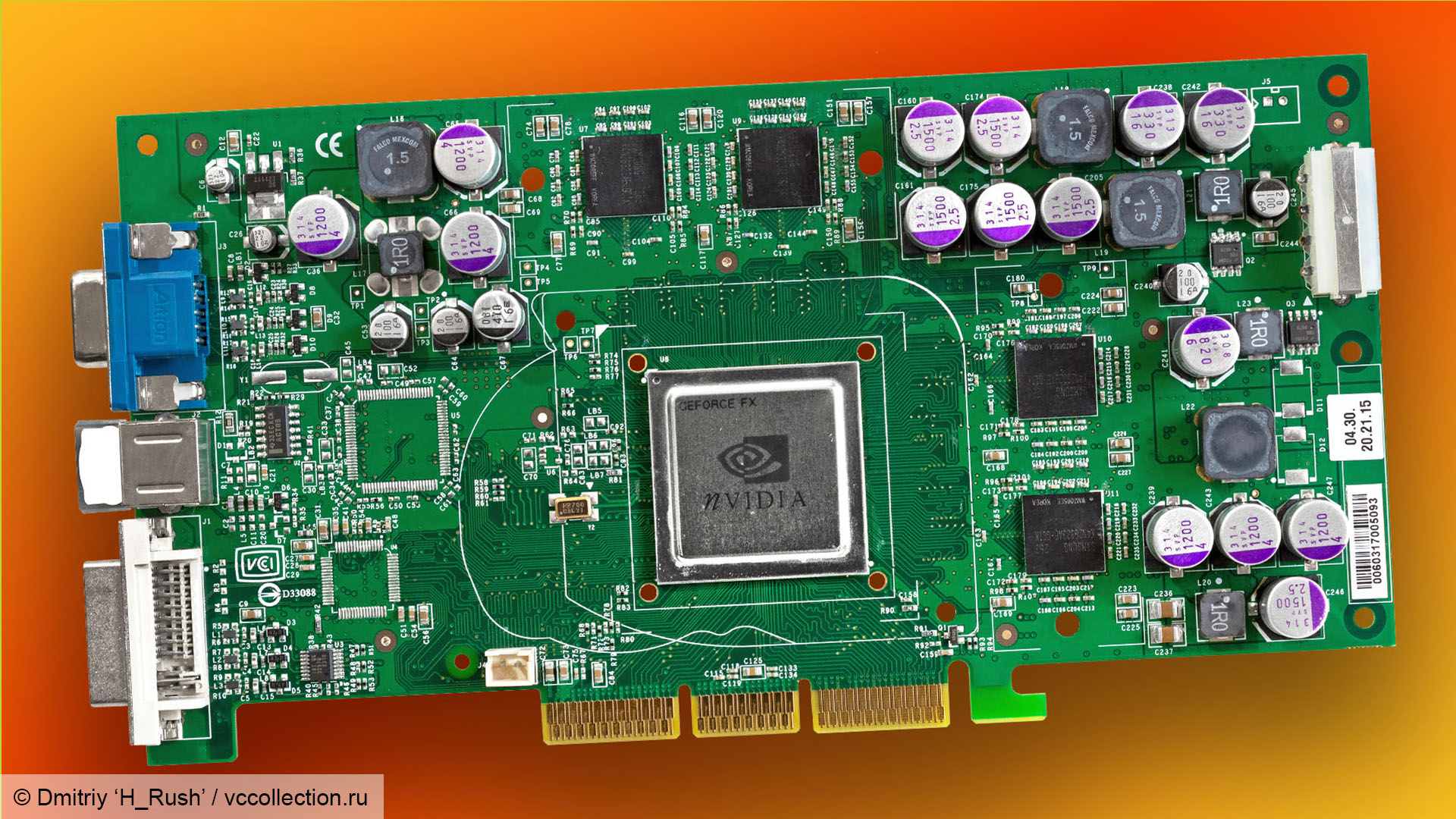
There have been some notable video games that supported early shaders, reminiscent of The Elder Scrolls III: Morrowind and Unreal Match 2003, however the overwhelming majority of video games nonetheless used fixed-function pipelines. That state of affairs began to alter over the following 12 months, with the launch of extra high-profile titles reminiscent of Doom 3 and Half-Life 2, in addition to the launch of DirectX 9 and Shader Mannequin 2, which launched a extra versatile shader mannequin.
Shader Mannequin 2 massively elevated the variety of pixel shader instruction slots from 8+4 to 32+64, and it upped the feel instruction restrict from 4 in Pixel Shader 1.3 to 32 in Pixel Shader 2. Likewise, the variety of vertex shader instruction slots doubled from 128 to 256, with the power to execute a most of 1,024 vertex directions in Vertex Shader 2, in comparison with simply 128 in Vertex Shader 1.1.
The issue for Nvidia was that ATi had obtained to Shader Mannequin 2 lengthy earlier than the launch of GeForce FX. The ATi Radeon 9700 had eight pixel processors and 4 vertex processors. It didn’t use all the most recent tech – it got here with 128MB of DDR reminiscence and was constructed on a 150nm course of, however it had a single-slot cooler that didn’t make an terrible noise and it beat Nvidia within the Shader Mannequin 2 arms race by a number of months.
To make issues worse, ATi launched an replace, the Radeon 9800 Professional, in the identical timeframe because the GeForce FX launch in early 2003. Based mostly on the identical Rage 8 structure, it upped the GPU clock pace from the 9700’s 275MHz to 380MHz, and elevated the reminiscence frequency from 270MHz (540MHz efficient) to 340MHz (680MHz efficient).
When the GeForce FX 5800 Extremely lastly launched in March 2003, the battle was already over earlier than it had begun. It launched with 4 pixel processors, in comparison with the Radeon 9700’s eight, and three vertex processors, in comparison with 4 on the 9700. It may barely compete with the GPU that had come out 9 months beforehand, not to mention ATi’s newest 9800 Professional.
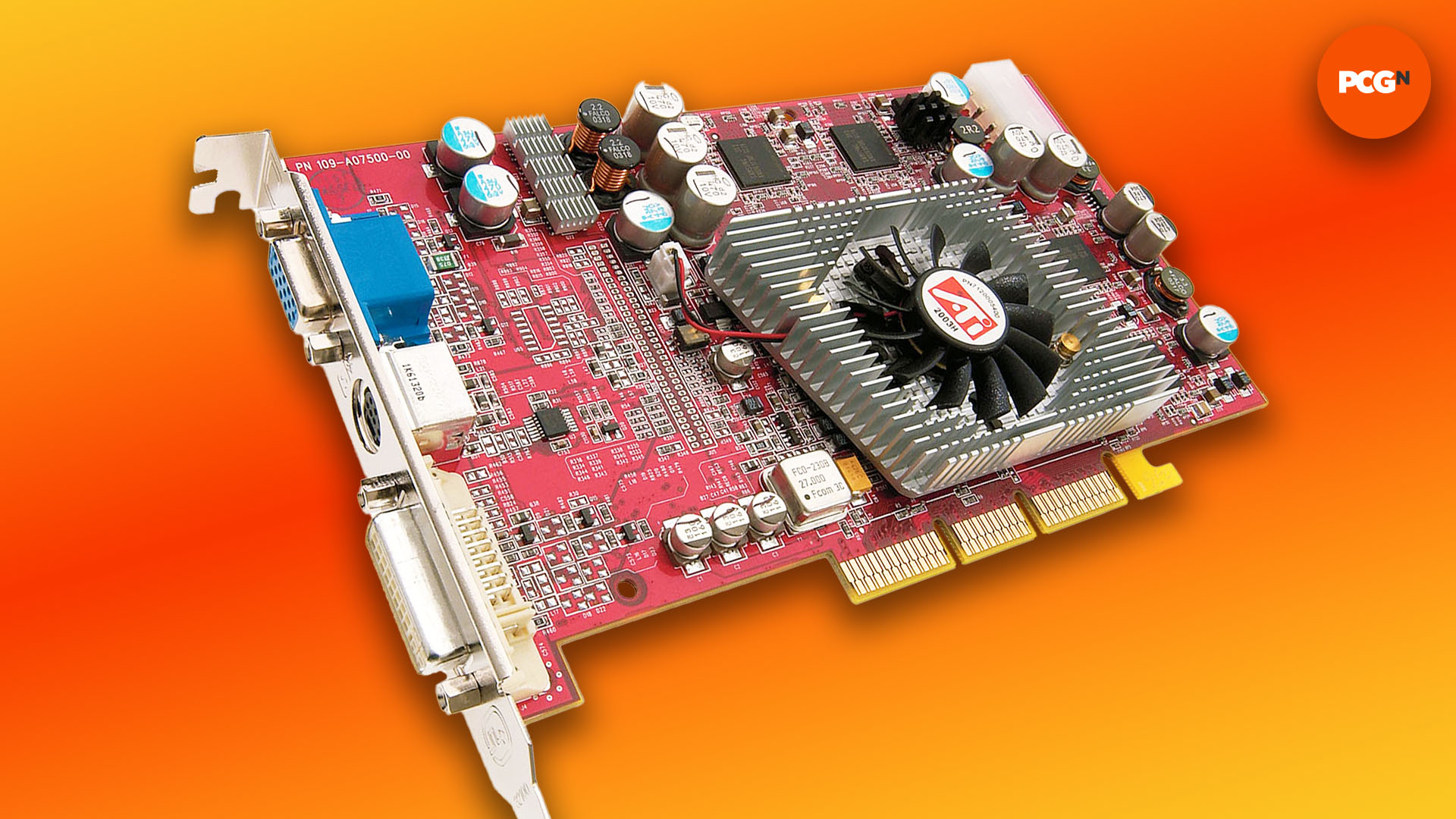
Nvidia GeForce FX bandwidth
After all, evaluating the variety of shaders isn’t an apples-to-apples likeness on paper, because of the underlying variations in structure, and that applies simply as a lot as we speak because it did then. For starters, in contrast to ATi’s GPUs at the moment, GeForce FX supported the superior Shader Mannequin 2a, which was much more highly effective than Shader Mannequin 2. The GeForce FX 5800 Extremely additionally had the advantage of utilizing the most recent GDDR2 reminiscence, with a high efficient clock pace of 1GHz in comparison with 680MHz on the 9800 Professional.
Nevertheless, regardless of ATI’s card’s utilizing slower reminiscence, they had been connected to a a lot wider interface. With a 256-bit large interface at its disposal, the Radeon 9800 Professional had a complete reminiscence bandwidth of 21.76GB/s from its 680MHz (efficient) DDR RAM.
Comparatively, the GeForce FX 5800 Extremely solely had a 128-bit large interface so, regardless of its sooner reminiscence, it solely had a complete reminiscence bandwidth of 16GB/s. Principally, Nvidia’s option to pair its GDDR2 reminiscence with a good interface largely negated the purpose of utilizing it. That was an enormous deal – you could possibly get away with slower shader efficiency in a world the place few video games used programmable shaders, however restricted reminiscence bandwidth opened up ATi’s lead in real-world gaming assessments as effectively.
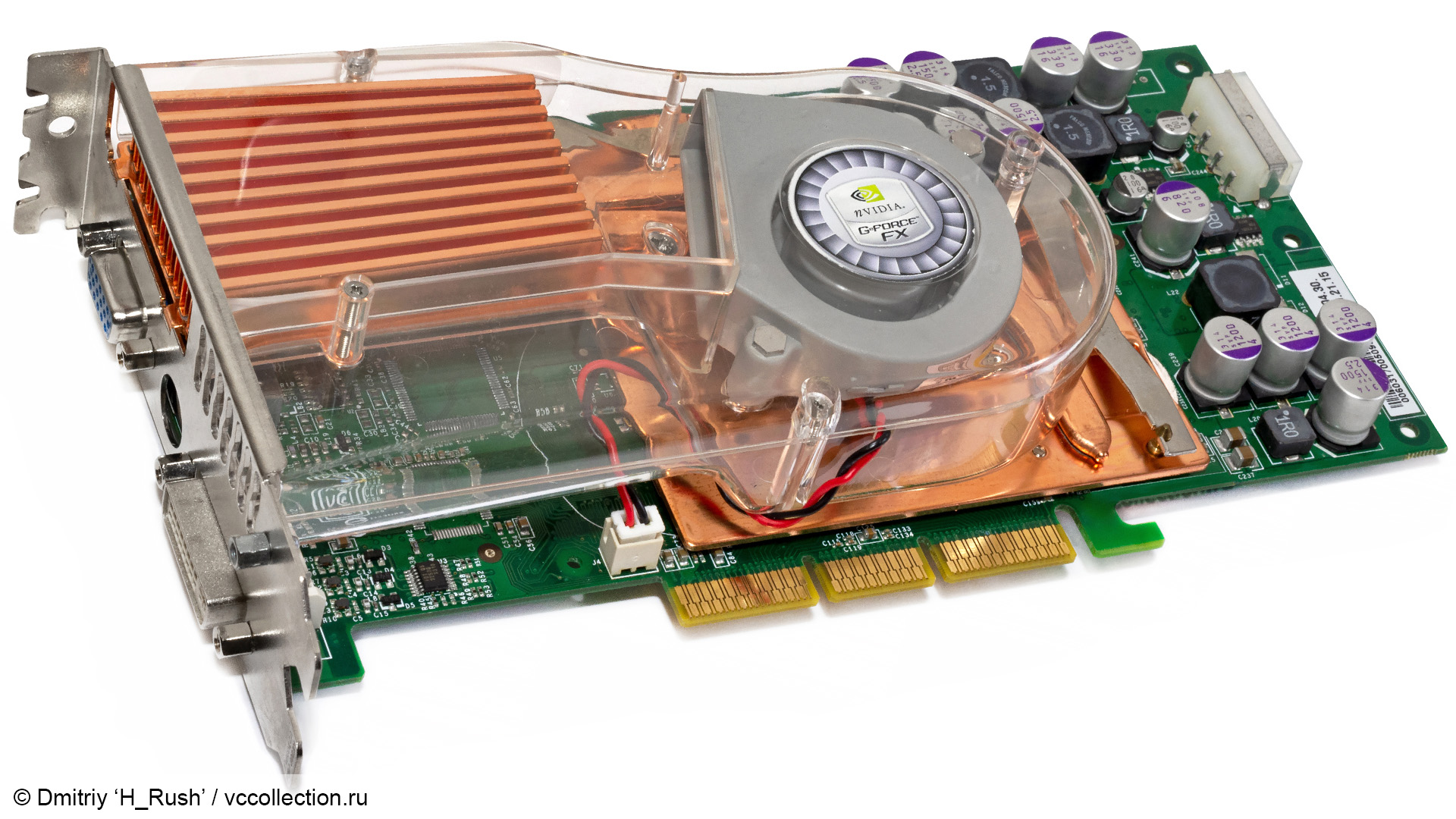
Saving GeForce FX
As soon as Nvidia had nursed its wounds from the response to its disappointing GPU and comical cooler, the corporate then needed to make the perfect of the state of affairs, because the GeForce FX structure was all it had. A 12 months later, it could be again on high with its very good GeForce 6000-series GPUs, however within the meantime, it needed to make GeForce FX work.
The 5800 Extremely was largely deserted by the trade, and Nvidia introduced out the GeForce FX 5900 sequence of GPUs. Just like the ATi competitors, these playing cards went again to utilizing DDR reminiscence, however with a 256-bit large interface. Within the case of the top-end FX 5950, the reminiscence was clocked at 475MHz (950MHz efficient) and had a 475MHz GPU clock.
Nvidia additionally tweaked the cooler design. The FX Circulate mannequin was largely deserted at this level, with many card producers utilizing their very own conventional cooler designs for the GeForce FX 5900 XT and 5900 Extremely, squeezing playing cards right into a single-slot design with a single cooling fan.
Nvidia GeForce FX benchmarks
This wasn’t sufficient to save lots of GeForce FX from embarrassment although. Within the very first problem of Customized PC, when it launched as a print journal within the UK, we carried out a Labs take a look at of Radeon 9800 Professional and GeForce FX 5900 Extremely playing cards, which at the moment sat within the $430-$530 worth bracket, with the Nvidia playing cards typically costing extra.
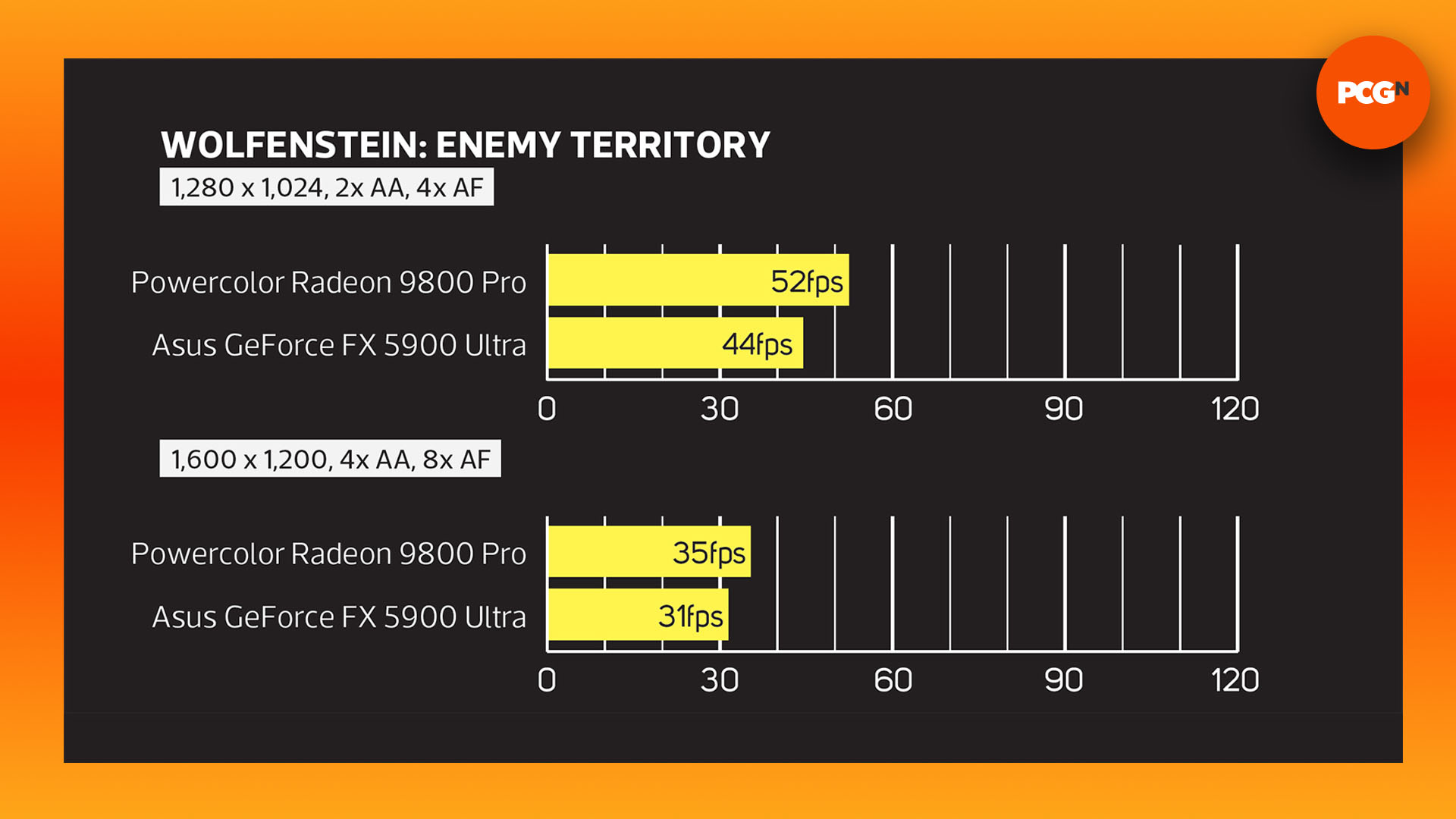
We’ve republished a number of the outcomes right here for amusing and, as you possibly can see, the Radeon 9800 Professional was both a lot sooner or the identical pace because the GeForce FX 5900 Extremely in our assessments on the time.
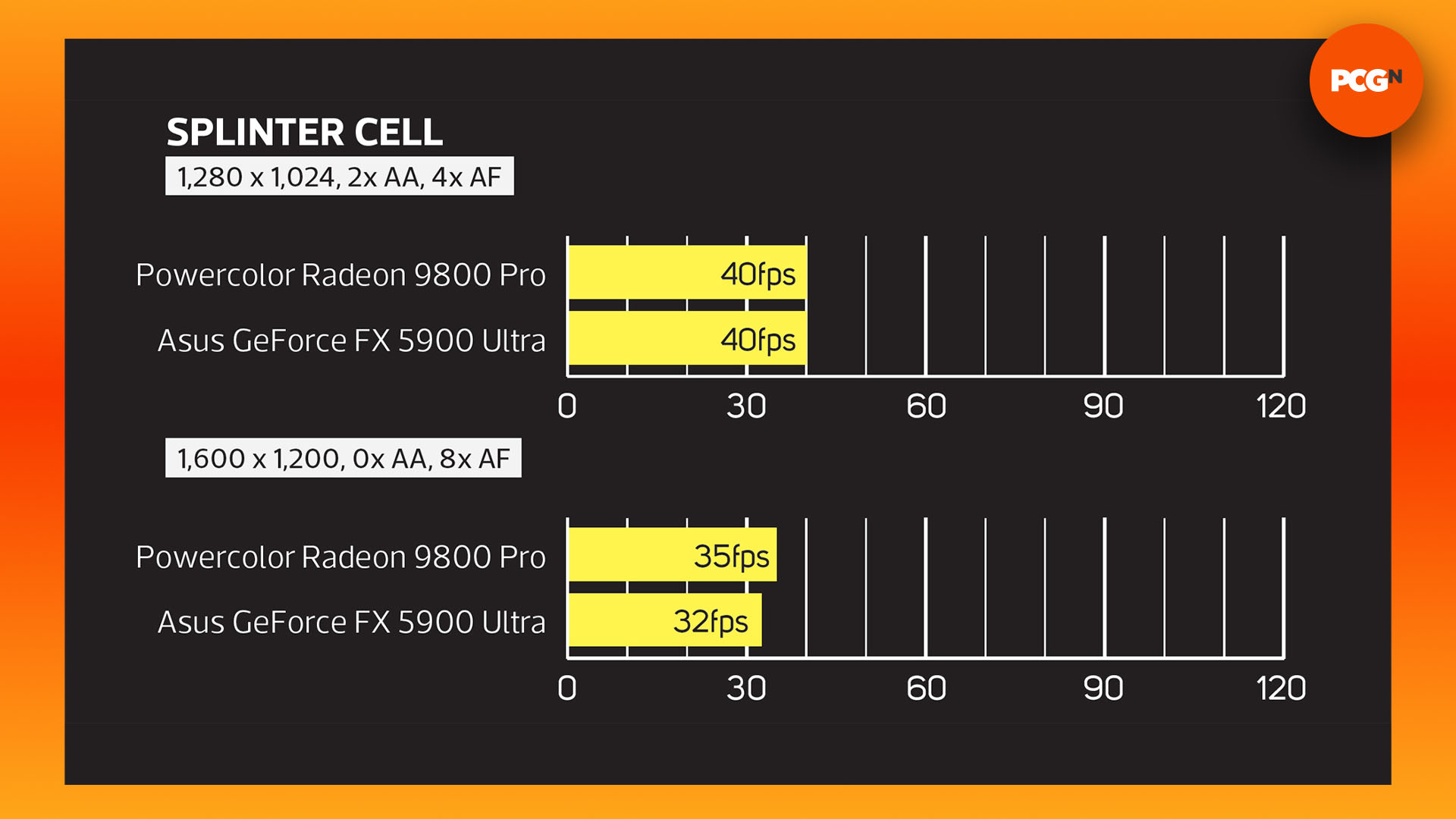
This sample was typically repeated throughout the board, with the GeForce FX 5200 and 5600 failing to match the efficiency of ATi’s equivalents on the time. There was no getting away from the exhausting proven fact that GeForce FX stank. Even with a wider reminiscence interface and a quieter cooler, the playing cards merely couldn’t hold tempo with the comparatively priced competitors from ATi.
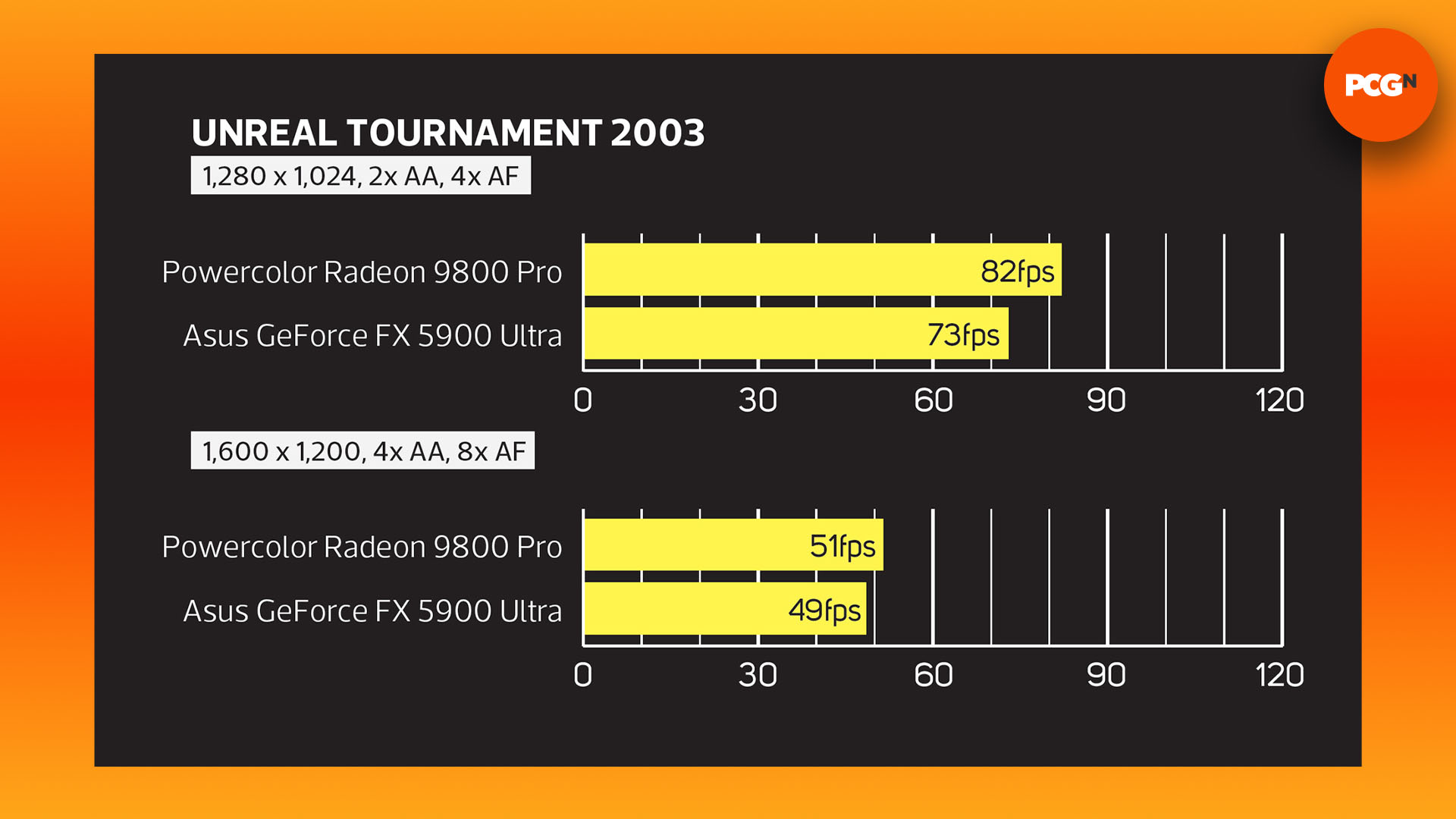
Bizarrely, GeForce FX 5800 Extremely playing cards now fetch first rate costs amongst collectors, due to their rarity and the story that surrounded them on the time. Should you had been unfortunate sufficient to purchase one and nonetheless have it lurking in a drawer, it could be value sticking it on eBay.
We hope you’ve loved this private retrospective about GeForce FX. For extra articles concerning the PC’s classic historical past, try our retro tech web page, in addition to our information on easy methods to construct a retro gaming PC, the place we take you thru the trials and tribulations of working with archaic PC gear.
We want to say an enormous thanks to Dmitriy ‘H_Rush’ who very kindly shared these implausible photographs of a Gainward GeForce FX 5800 Extremely with us for this function. You may go to vccollect to see extra of his intensive graphics card assortment.

